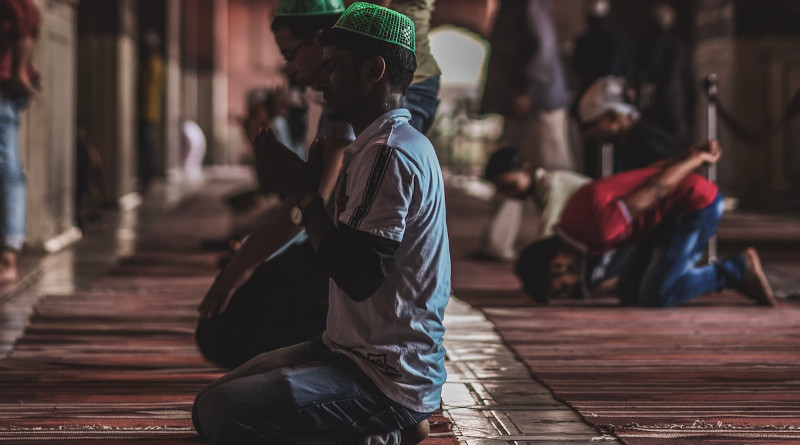‘Make In India’s’ Muslim Marginalization – Analysis
By Christian Kurzydlowski*
India’s post-colonial transition to capitalism has been mirrored by marketeering slogans. Currently, it is enticing foreign capital through the ‘Make in India’ campaign, inaugurated in 2015. The key proposed outcome of this strategy is to make India a ‘factory of the world’. But in addition to its economic objectives, government rhetoric surrounding Make in India branding is being wrapped in Hindu nationalist trappings for the domestic audience.
By looking to turn itself into a global manufacturing hub, Prime Minister Narendra Modi’s Bharatiya Janata Party (BJP) is trying to address the absence of large manufacturing in India. Planned manufacturing exports are expected generate revenue in foreign currencies, thus enabling the import of machinery and materials to upgrade Indian factories. China’s transition away from an investment and export-driven model and toward consumer-driven growth presents India with a potential opening on several levels.
Since opening its consumer market to foreign brands in 1991, India has used slogans like ‘Make in India’ and ‘self-reliant India’ to commodify the nation. National identity is an effective and enduring foundation of brand formation. Investment flows into India are taken as a sign of state power and prestige, which in turn is being used by Modi and the BJP to give impetus to their Hindutva political-cultural project. Hindutva looks back to an ahistorical Hindu golden age, which the Mughals and the British disrupted. The branding of a productive workforce, a land of untapped resources and patriotism — all hallmarks of Make in India — promote an artificial and idyllic Hinduized utopia.
Alongside this branded utopia, Modi and the BJP are seeking to forge a historical revisionist consensus. Without consensus on what constitutes a nation’s past, political and social faults become exposed and intensify. Internationally, Modi may aspire to brand India as an inclusive global manufacturing hub. Yet domestically, his government is manufacturing the exclusion of its Muslim citizens, who comprise 14 per cent of India’s population. Using colonial era constructs of religious identity, the BJP’s version of history prioritises India’s Hindu community. This course is fraught with dire consequences for India, economically, politically and socially.
The Make in India campaign encapsulates two trends within the BJP’s approach to political economy: increased market liberalisation and support for Indian products and companies. These trends bear similarities with the colonial era Swadeshi movement. At its core, the idea of the Swadeshi movement is that regardless of quality, an Indian product should be preferred over any foreign product.
Foreign direct investment (FDI) will serve the state goal of facilitating technology transfer to benefit India as a form of value-added production. But as a weapon of instrumentalisation, the Make in India campaign’s focus on the ‘national’ economically delegitimises India’s Muslims by not acknowledging their economic contribution or even their presence. According to the 15th Census of India, 31 per cent of Indian Muslims live in poverty and hold only 8.5 per cent of government jobs. Many within the BJP believe that Muslims are unfairly promoted, when in fact, most have hardly benefitted.
The BJP sees India as a civilisation, a nation organised around central cultural nodes, not politics. Secularism and cosmopolitanism are seen as parasitic hosts on the living body of the Hindu nation. As a concept of Western philosophy, tolerance is a symbol of the opposition Indian National Congress Party, branded by the BJP as harmful to Hinduism. It is against this backdrop that Islam, its place in Indian society and its history are being redefined.
India’s nationalism, and its recent memory, are tied to colonialism. Colonialist interpretations of Indian history, reinforced by the BJP at both state and federal levels, are perpetuating colonialist tropes of India as divided by religion. This seems to portray Indian history as a cultural and religious monolith between ‘indigenous’ Hindus and the ‘foreign’ of Islam.
The formation of a committee under the aegis of the Ministry of Culture to study the ‘origins and evolution of Indian culture’, going back 12,000 years, has only exacerbated this. To prove the continuity of Indian culture and its historical trajectory, the veracity of Hindu scriptures must be proven to crystallise the essentialist idea that to be Indian is to be Hindu.
The BJP has learned from its ‘India Shining’ slogan of 2004 promising economic optimism, focusing instead on Antyodaya (rise of the last person), which is aimed at improving the lot of India’s poorest citizens. Through the Pradhan Mantri Awas Yojana, a government scheme to provide affordable housing to the urban poor, the BJP can directly connect to those outside its electoral base.
The BJP should adjust its policies to include all Indians, including the Muslim population, in this scheme, which would help to promote its international branding as a productive workforce. Government at all levels must provide specific programs and build infrastructure to promote the inclusion of Muslim citizens, while at the same time provide them access to jobs, services and housing.
With many of India’s Muslims continuously falling outside of government initiatives, the BJP is missing out on providing education and training to a significant portion of its citizens. This will inevitably exacerbate social and religious fissures. Using a skewed notion of history to inform current policies is a dangerous game that will backfire in the long run.
*About the author: Christian Kurzydlowski holds a PhD in history from the University of London and is currently working as an independent researcher based in Toronto, Canada.
Source: This article was published by East Asia Forum


Looks like Christian Kurzydlowski does not seem to know much about India’s history or partition of India and ethnic cleansing of non-Muslims it parts of British India carved out as Muslim homeland, Pakistan.
in addition she seem to be exhibiting inferiority many Slavs, particularly Polish, feel with reference to west and basically look down upon their fellow Slavs in east.
When one looks objectively India, Pakistan & China Indian treatment of minorities is examplary.